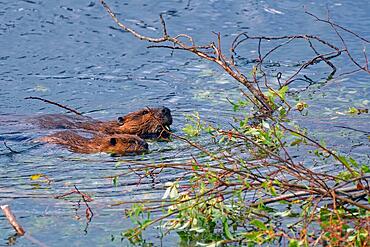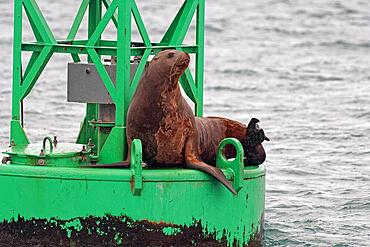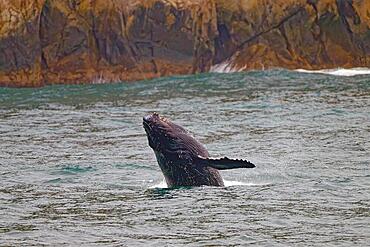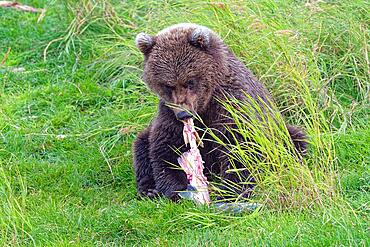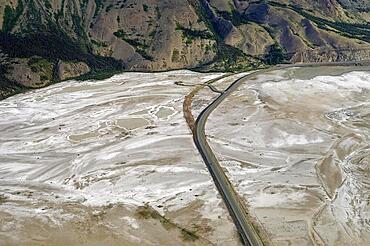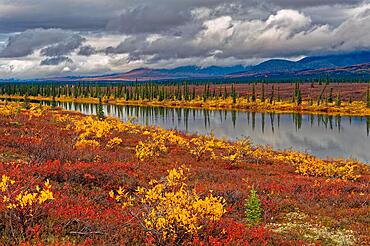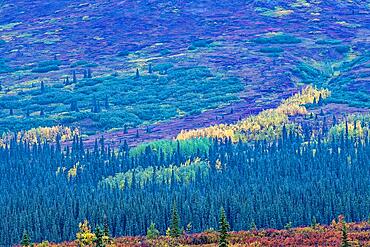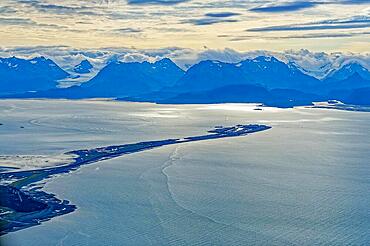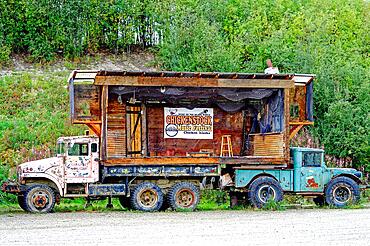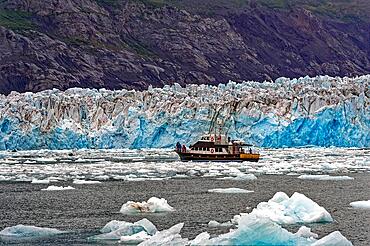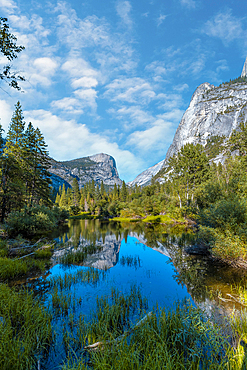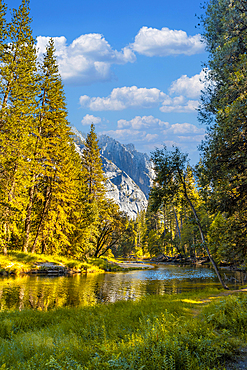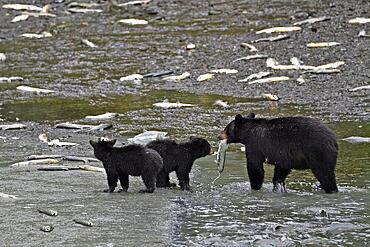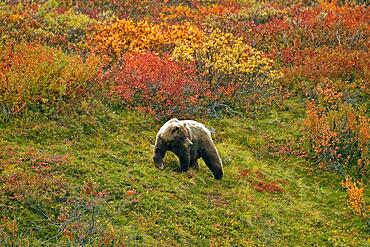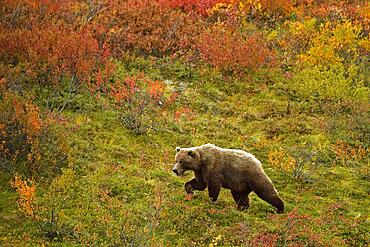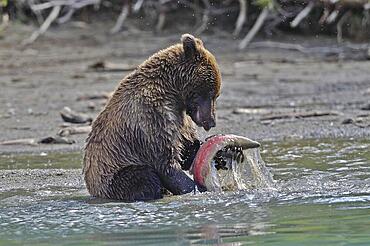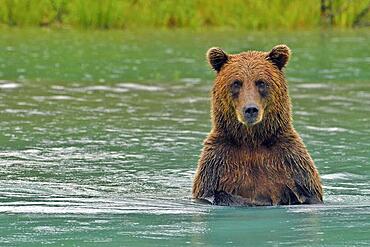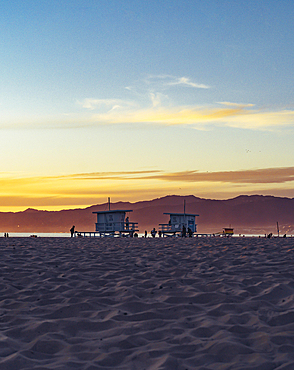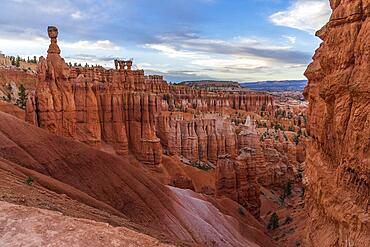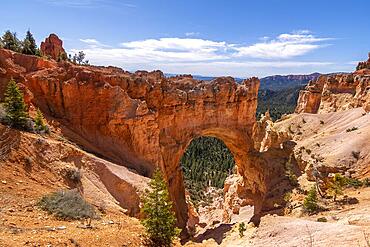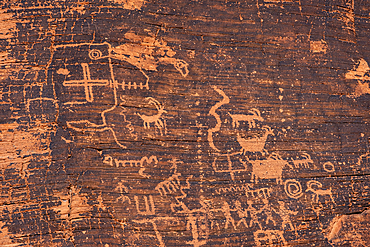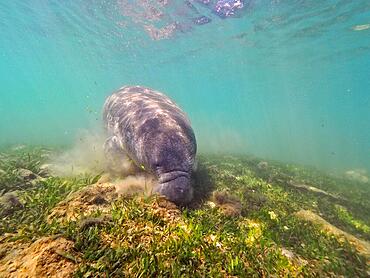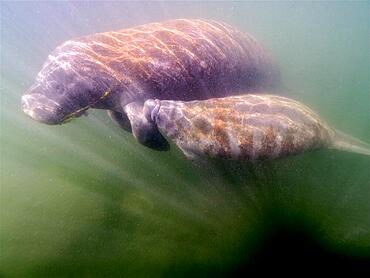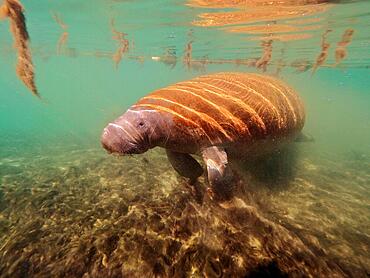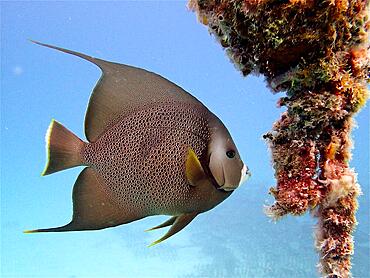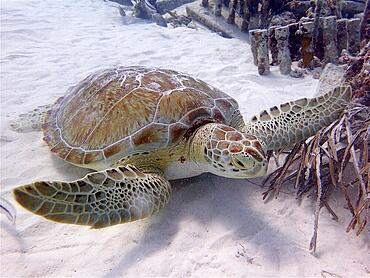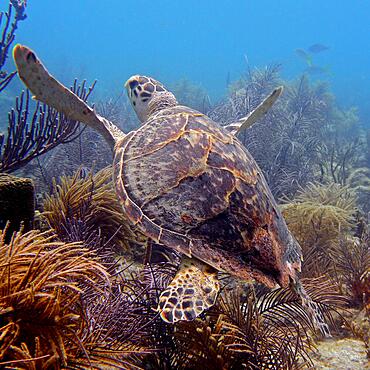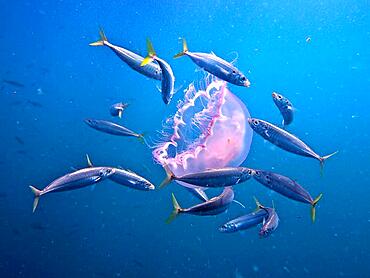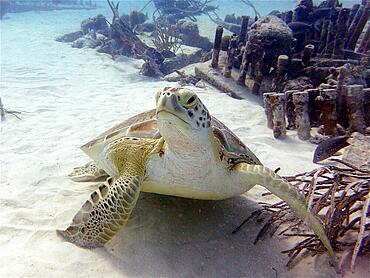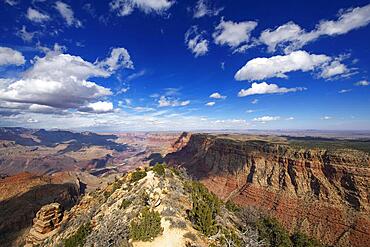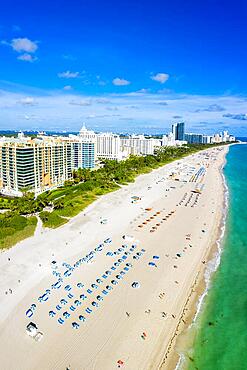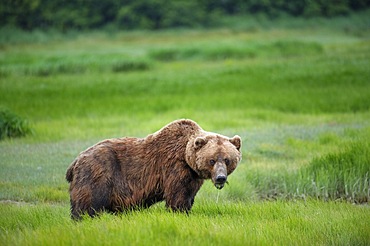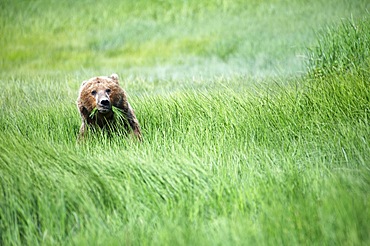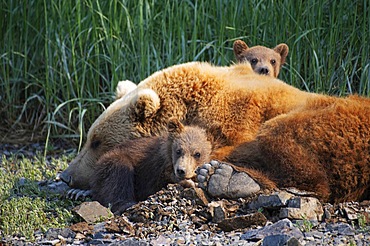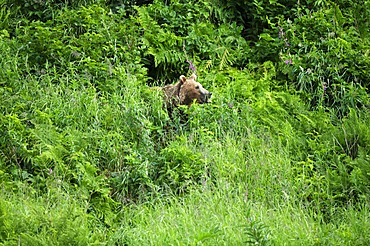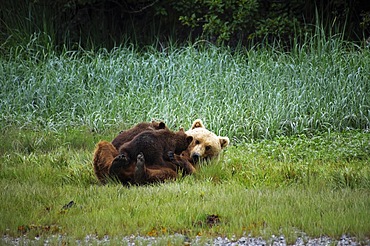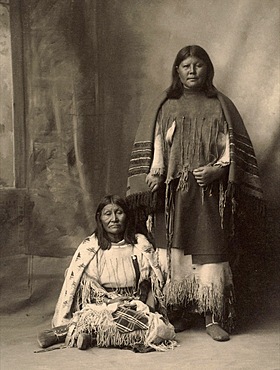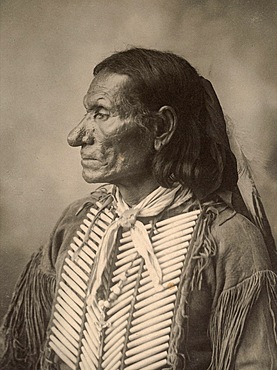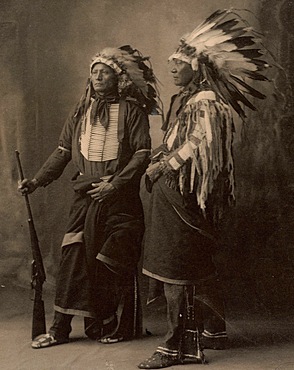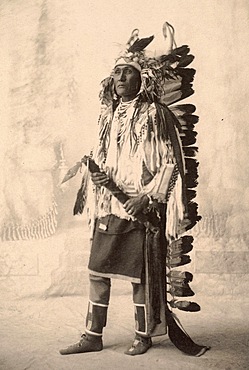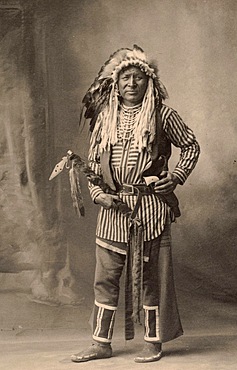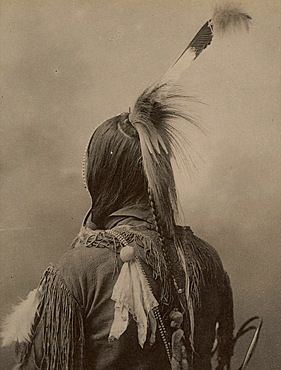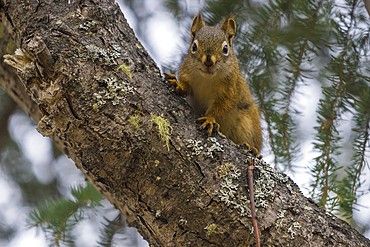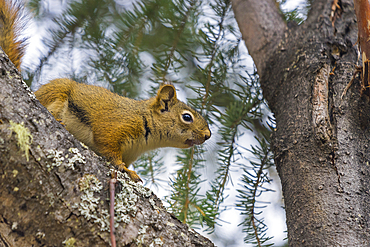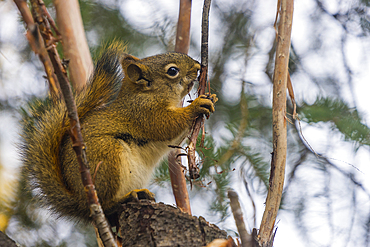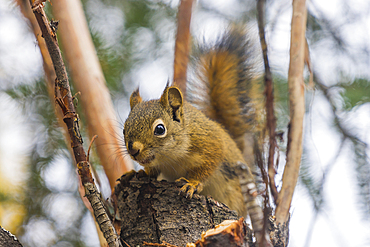Recent searches
Loading...
832-404490 - Two north american beavers (Castor canadensis), old and young swimming in the beaver pond, food plants visible, Yukon Territory, Canada, North America
832-404489 - Steller sea lion (Eumetopias jubatus) sitting on buoy in Valdez Harbour, Southeast Alaska, Alaska, USA, North America
832-404487 - Humpback whale (Megaptera novaeangliae) up to the pectoral fin above the water surface, rocky coastline behind, Kenai Fjords National Park, Alaska, USA, North America
832-404486 - Two young cross foxes (Vulpes vulpes) sitting on the burrow, North Alaska, Alaska, USA, North America
832-404485 - Brown bear (Ursus arctos), grizzly young on the coast, eating salmon, Katmai, Alaska, USA, North America
832-404471 - Aerial view of the Alaska Highway in the Slims River Valley, with Sheep Mountain in the background, Yukon Territory, Canada, North America
832-404470 - Autumn landscape in Denali State Park, intense colours, reflections in the water, Central Alaska, Alaska, USA, North America
832-404467 - Autumn landscape in Denali State Park, intense colours, reflections in the water, Central Alaska, Alaska, USA, North America
832-404466 - Autumn landscape in Denali State Park, Central Alaska, Alaska, USA, North America
832-404464 - Aerial view of Homer Spit, Homer, Kachemak Bay, mountains of Kachemak Bay State Park, Kenai Peninsula, South Alaska, Alaska, USA, North America
832-404463 - Music stage in the centre of Chicken, Top of the World Highway, Interior Alaska, Alaska, USA, North America
832-404462 - Meares Glacier, detail view, rainforests in the background, Chugach Mountains, Prince William Sound, Valdez, South Alaska, Alaska, USA, North America
832-404461 - Excursion boat in front of Columbia Glacier, Chugach Mountains in the background, Prince William Sound, Valdez, South Alaska, Alaska, USA, North America
832-404460 - Welcome sign when entering Alaska, coming from Canada, Yukon Territory, North Alaska, Alaska, USA, North America
832-404459 - At the Top of the World Highway with signs to the wasteland settlement of Chicken, Interior Alaska, Alaska, USA, North America
832-404458 - Northern lights (Aurora borealis) in different colours, starry sky, snowy mountain landscape in front, Alaska, USA, North America
832-404307 - Vernal Falls waterfall of Yosemite National Park from the water that falls into the stones in sunset, long exposure photo. California, United States, North America
832-404306 - Reflections in the water of the Yosemite Mountains in Mirror lake, Yosemite. California, United States, North America
832-404305 - Lovely walk to walk in Yosemite valley. California, United States, North America
1112-8625 - An adult female American black bear (Ursus americanus), Big Bend National Park, Texas, United States of America, North America
832-403244 - American Eagle, US Flag, Aberdeen, South Dakota, USA, North America
832-402854 - Pika (Ochotona) standing among boulders and on large rocks, Denali National Park, Alaska, USA, North America
832-402853 - Fishing boat pulling a full net of pink salmons (Oncorhynchus gorbuscha) out of the sea, Prince William Sound, Alaska, USA, North America
832-402852 - Pink salmons (Oncorhynchus gorbuscha) swim densely packed upstream on their way to spawning grounds, Prince William Sound, Alaska, USA, North America
832-402851 - Pink salmon (Oncorhynchus gorbuscha) jumping up a waterfall on their way to spawning grounds, Prince William Sound, Alaska, USA, North America
832-402849 - American Black Bear (Ursus americanus) with two cubs standing in the water holding captured salmon in her mouth, rainforest, Prince William Sound, Alaska, USA, North America
832-402846 - Grizzly bear (Ursus arctos horribilis) striding across the autumn-coloured tundra with a view of the coloured berry bushes, Denali National Park, Alaska, USA, North America
832-402847 - Brown bear (Ursus arctos) standing on its hind legs in the water with a freshly caught salmon in its mouth, Lake Clarke National Park, Alaska, USA, North America
832-402845 - Grizzly bear (Ursus arctos horribilis) striding across the autumn-coloured tundra with a view of the coloured berry bushes, Denali National Park, Alaska, USA, North America
832-402844 - Young brown bear (Ursus arctos) sitting on the shore playing with a salmon, Lake Clarke National Park, Alaska, USA, North America
832-402843 - Brown bear (Ursus arctos) standing on hind legs in tall grass, her cub sitting in front of her, Lake Clarke National Park, Alaska, USA, North America
832-402842 - Brown bear (Ursus arctos) standing on hind legs up to chest in water and looking at camera, Lake Clarke National Park, Alaska, USA, North America
832-402841 - The glacier tongue calves into the Pacific, Columbia Glacier, Prince William Sound, Alaska, USA, North America
832-402840 - Fishing boat in Prince William Sound, Alaska, USA, North America
832-402838 - Aerial view of the Alaska Mountain Range, Alaska, USA, North America
832-402839 - Aerial view of the Alaska Mountain Range with Toklat River Valley, Alaska, USA, North America
832-402837 - Aerial view of the Alaska Mountain Range with a view of Denali with Muldrow Glacier, Alaska, USA, North America
832-402835 - Fog over the Nenana River valley from Denali Village overlooking the Alaska Mountain Range, Alaska, USA, North America
832-402836 - Aerial view of the Alaska Mountain Range with a view of Denali with Muldrow Glacier, Alaska, USA, North America
832-402834 - Road in Denali National Park, the first 24 kilometres are paved, Alaska, USA, North America
832-402179 - Venice Beach, California, United States, March 15 2022: Two californian lifeguard towers at sunset, North America
832-401812 - New York City skyline of Manhattan with Brooklyn Bridge and World Trade Center skyscraper at night in New York, USA, North America
832-401811 - New York City Statue of Liberty Aerial View in New York, USA, North America
832-401810 - New York City Manhattan skyline with World Trade Center skyscraper in New York, USA, North America
832-401808 - New York City skyline real estate Manhattan skyscrapers with Central Park aerial view in New York, USA, North America
832-401809 - New York City skyline of Manhattan with Brooklyn Bridge and World Trade Center skyscraper at night in New York, USA, North America
832-401310 - Thor's Hammer, Bryce Amphitheatre, Bryce Canyon National Park, Utah, USA, North America
832-401309 - Rock arch at Natural Bridge viewpoint, Bryce Canyon National Park, Utah, USA, North America
1353-546 - Native American rock art (Petroglyphs) on Canyon Wall, Petroglyph Canyon, Mouse's Tank Trail, Valley of Fire State Park, Nevada, United States of America, North America
1112-7504 - Adult American oystercatcher (Haematopus palliatus), hunting along the shore, Isla Rasa, Baja California, Mexico, North America
1112-7500 - A pair of American oystercatchers (Haematopus palliatus), hunting along the shore, Isla Rasa, Baja California, Mexico, North America
832-401070 - Round-tailed manatee (Trichechus manatus) grazing, Crystal River dive site, Florida, USA, North America
832-401071 - A round-tailed manatee (Trichechus manatus) suckles her young, Crystal River dive site, Florida, USA, North America
832-401069 - Round-tailed manatee (Trichechus manatus), Crystal River dive site, Florida, USA, North America
832-401068 - Round-tailed manatee (Trichechus manatus), Crystal River dive site, Florida, USA, North America
832-401066 - Gray angelfish (Pomacanthus arcuatus), Nursery dive site, Tavernier, Florida Keys, Florida, USA, North America
832-401067 - Green turtle (Chelonia mydas), Nursery dive site, Tavernier, Florida Keys, Florida, USA, North America
832-401065 - Hawksbill turtle (Eretmochelys imbricata imbricata), John Pennekamp Coral Reef State Park dive site, Key Largo, Florida Keys, Florida, USA, North America
832-401052 - 2 specimens of west indian manatee (Trichechus manatus) grazing in the Crystal River, Florida, USA, North America
832-401051 - West indian manatee (Trichechus manatus) grazing in Crystal River, Florida, USA, North America
832-401050 - West indian manatee (Trichechus manatus) in the Crystal River, Florida, USA, North America
832-401048 - A group of fish eating an common jellyfish (Aurelia aurita), Amber Jack dive site, Destin, Panhandle, Gulf of Mexico, Florida, USA, North America
832-401049 - Atlantic goliath grouper (Epinephelus itajara) with open mouth at cleaning station. Dive site John Pennekamp Coral Reef State Park, Key Largo, Florida Keys, Florida, USA, North America
832-401047 - Caribbean reef shark (Carcharhinus perezii), John Pennekamp Coral Reef State Park dive site, Key Largo, Florida Keys, Florida, USA, North America
832-401046 - Green turtle (Chelonia mydas), dive site John Pennekamp Coral Reef State Park, Key Largo, Florida Keys, Florida, USA, North America
832-400737 - Loch im Felsen, Papago Park, Phoenix, Arizona, USA, North America
832-400736 - Loch im Felsen, Papago Park, Phoenix, Arizona, USA, North America
832-400735 - Saguaro cactus, Phoenix, Arizona, USA, North America
832-400734 - Frank Lloyd Wright, Taliesin Westmuseum, Scottsdale, Arizona, USA, North America
832-400732 - View from South Rim, Grand Canyon National Park, Arizona, USA, North America
832-400733 - Desert View Observation Tower, South Rim, Grand Canyon National Park, Arizona, USA, North America
832-400731 - Dam, Glen Canyon Dam, Lake Powell, Page, Arizona, USA, North America
832-400664 - Downtown Los Angeles skyline with skyscrapers in the evening in Los Angeles, USA, North America
832-400662 - View of Downtown Los Angeles Skyline with Palm Trees at Sunset in California in Los Angeles, USA, North America
832-400663 - Aerial View of Pier and Beach with Sea Vacation in California San Clemente, USA, North America
832-400661 - Aerial view of the beach and sea holiday in Miami Beach, USA, North America
832-400659 - View of Downtown Los Angeles Skyline with Palm Trees at Sunset in California in Los Angeles, USA, North America
832-400660 - Downtown Los Angeles skyline panorama with skyscrapers in the evening in Los Angeles, USA, North America
832-400658 - Aerial view of the beach and sea holiday in Miami Beach, USA, North America
832-400657 - Downtown Los Angeles skyline with skyscrapers in the evening in Los Angeles, USA, North America
832-400655 - Aerial view of Harbor interchange and Century Freeway traffic with downtown Los Angeles, USA, North America
832-400656 - Downtown San Diego skyline with water in California in San Diego, USA, North America
832-399882 - Coastal brown bear (Ursus Arctos middendorfi), grizzly bear lifting rock to look for shells, Katmai National Park, Alaska, USA, North America
832-399883 - Coastal brown bear (Ursus Arctos middendorfi), grizzly bear eating sedge, Katmai National Park, Alaska, USA, North America
832-399885 - Coastal brown bear (Ursus Arctos middendorfi) Grizzly bear eating sedge, Katmai National Park, Alaska, USA, North America
832-399884 - Mother bear with two cubs, coastal brown bear (Ursus Arctos middendorfi), Kukak Bay, Katmai National Park, Alaska, USA, North America
832-399886 - Grizzly bear in thicket takes scent, Katmai National Park, Alaska, USA, North America
832-399887 - Mother bear suckling her two cubs, grizzly bear, coastal brown bear (Ursus Arctos middendorfi), Kukak Bay, Katmai National Park, AlaskaGrizzly bear suckling her two cubs, Katmai National Park, Alaska, USA, North America
832-399888 - Attention Bears, Warning Sign, Katmai, Alaska, USA, North America
832-399889 - Attention Bears, Warning Sign, Katmai, Alaska, USA, North America
832-399991 - Two woman, Indians, Kiowa, after a picture by F.A.Rinehart, 1899, Kiowa or Kaigwu are an ethnic tribe of the Indians of North America, from what is now western Montana, Historic, digitally restored reproduction of an original from the period
832-399992 - Indian, Pablino Diaz, Kiowa, after a picture by F.A.Rinehart, 1899, Kiowa or Kaigwu are an ethnic tribe of the Indians of North America, from what is now western Montana, Historic, digitally restored reproduction of an original from the period
832-400001 - Chief Goes To War, Chief Hollow Horn Bear, two chiefs with feather headdresses, Sioux, North American Indian people, after a painting by F.A.Rinehart, 1899, Historic, digitally restored reproduction of an original from the period
832-400003 - Spies On The Enemy, Chief with feather headdress, Crow, North American Indian tribe, after a painting by F.A.Rinehart, 1899, Historic, digitally restored reproduction of an original from the period
832-400004 - White Swan, Crows, North American Indian tribe, after a painting by F.A.Rinehart, 1899, Historic, digitally restored reproduction of an original from the period
832-400006 - Indian, Omaha, dancing bonnet and hair ornament, feather, after a picture by F.A.Rinehart, 1899, Omaha are a North American Indian tribe from the Dhegiha branch of the Sioux language family, Historic, digitally restored reproduction of an original from the period
1359-580 - American red squirrel (Tamiasciurus hudsonicus) on tree, Tolsona, Alaska, United States of America, North America
1359-578 - American red squirrel (Tamiasciurus hudsonicus) on tree, Tolsona, Alaska, United States of America, North America
1359-573 - American red squirrel (Tamiasciurus hudsonicus) on tree, Tolsona, Alaska, United States of America, North America
1359-568 - American red squirrel (Tamiasciurus hudsonicus) on tree, Tolsona, Alaska, United States of America, North America
